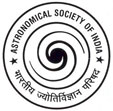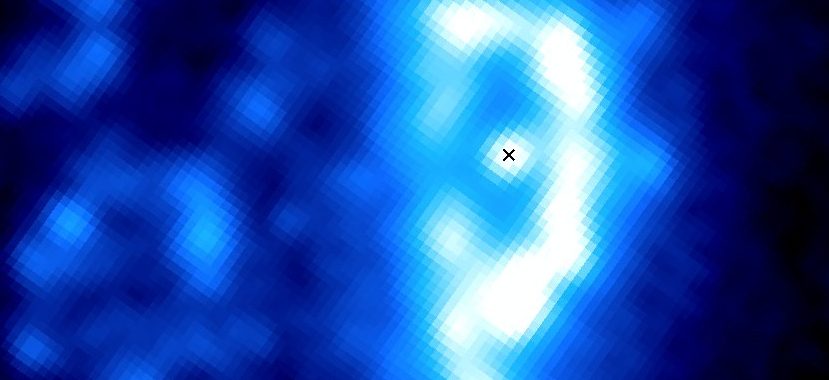May 2019:
The AstroSat Picture of the Month for May 2019 is the near-ultraviolet image of the Jellyfish Galaxy JO201, using ASTROSAT. This image shows young stars formed in the disk of the galaxy. The cross marks the active galactic nucleus (AGN) at the centre of the galaxy. The cavity-like structure around the central AGN is due to a dearth of young stars.
Picture credit: Koshy George and team


“AstroSat Picture of the Month” is an initiative of the Public Outreach and Education Committee of the Astronomical Society of India and the AstroSat Training and Outreach Team.
Peering into the heart of the Jellyfish Galaxy
This month, we bring back our friend, the Jellyfish galaxy JO201, that we had introduced to you in an earlier APOM, where we described how this galaxy acquires its tentacles-like shape. However, this time, we do not talk about its outer shape but rather study its interior to understand its anatomy. This galaxy was imaged in near and far UV bands from UVIT on AstroSat and the zoomed-in image of the centre is shown in the picture. When we see the the galaxy closely, we notice that the UV emission is bright at the centre, surrounded by a region where UV light is faint. Thereafter, it is again bright in a broken ring-like structure.
Why is there less ultraviolet light from the region just around the centre? By comparing the UV images from AstroSat with images from other telescopes at different wavelengths, astronomers from India and abroad have shown that the ultraviolet light from the central region of this galaxy is related to the working of Active Galactic Nuclei (AGN) at the centre of this galaxy. Most large galaxies are found to have central regions, called AGN, that are very bright at certain wavelengths. They are believed to be very bright because of the presence of supermassive black holes, whose mass could be hundreds of thousands to billions of times the mass of Sun. The light doesn't come from the black-holes themselves but from gas and dust surrounding the black-hole swirling into its recesses. AGN are considered to have important roles to play in the formation of stars in galaxies, and consequently in their appearance and evolution.
In the case of JO201, the UV from regions in the outer ring and beyond is thought to be due to young stars formed in the last 200 million years, unlike the centre which is bright in UV because of the AGN. Therefore, the cavity region surrounding the centre, that has low UV light, has very little star formation occurring. What halted the star formation here? These researchers suggest that energy is released from the AGN into its surroundings, heating the surrounding cold gas clouds and disrupting the process of star formation here. They also show that the effect of stripping of gas giving the jellyfish galaxy its name, is responsible for the lack of young stars in the broken ring structure. This is evident from the fact that both the broken ring structure and tentacles are seen on the left side of the galaxy image. More details of this work can be found in their paper, accepted for publication in the Monthly Notices of Royal Astronomical Society.
The paper describing the results is accepted for publication by the Monthly Notices of the Royal Astronomical Society and can be found here. The accompanying science story, through India Science Wire, is here.
Click here for the entire APOM archive.
More about ASTROSAT
AstroSat, India's first dedicated multi-wavelength space observatory, was launched by ISRO on 28 September, 2015. It has five instruments on board – the Ultra Violet Imaging Telescope, the Soft X-ray Telescope, the Large Area X-ray Proportional Counter, the Cadmium-Zinc-Telluride Imager and the Scanning Sky Monitor.
Get answers to your common queries about ASTROSAT in English, in हिंदी, and in मराठी.

